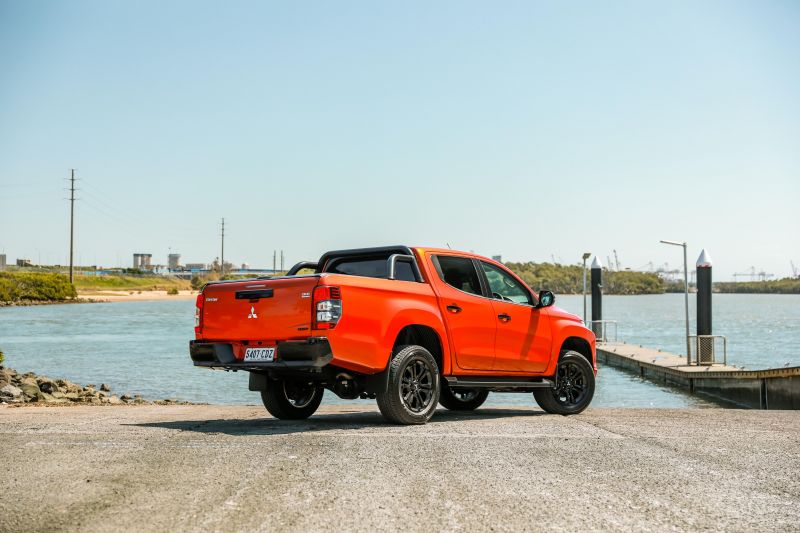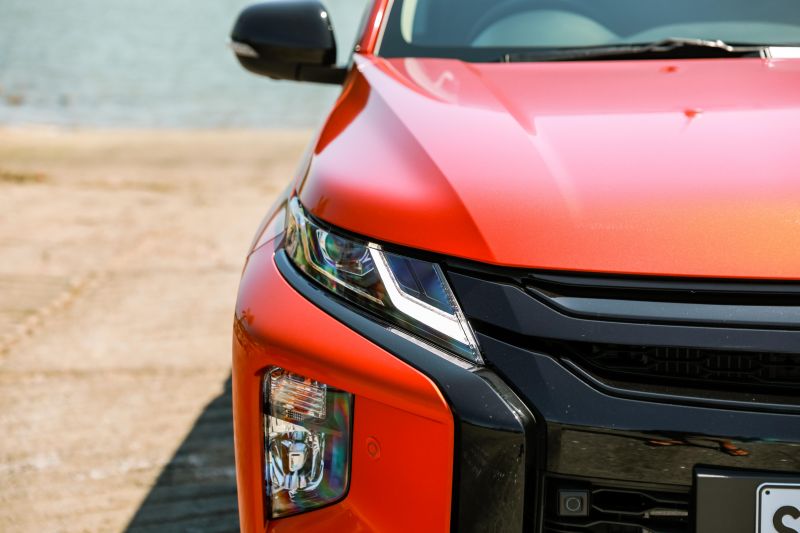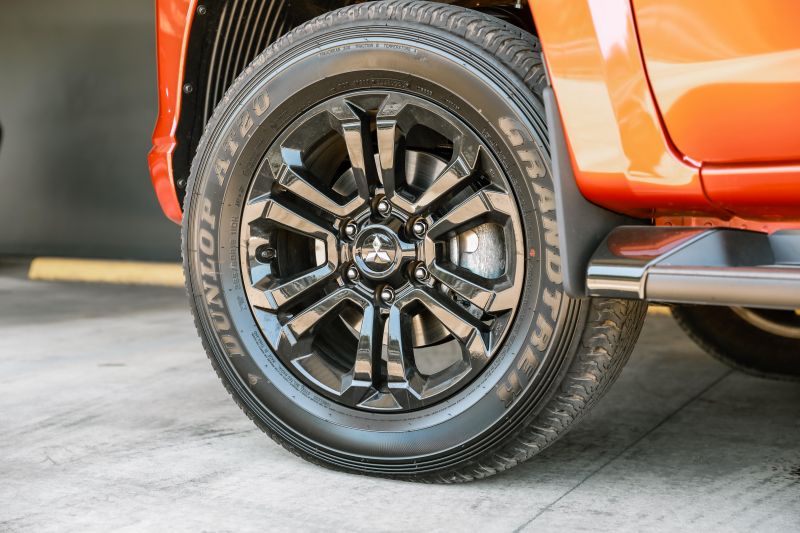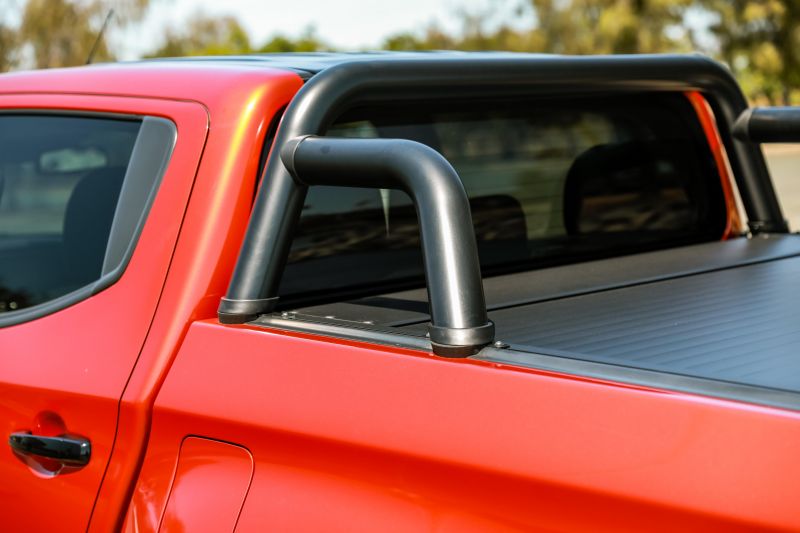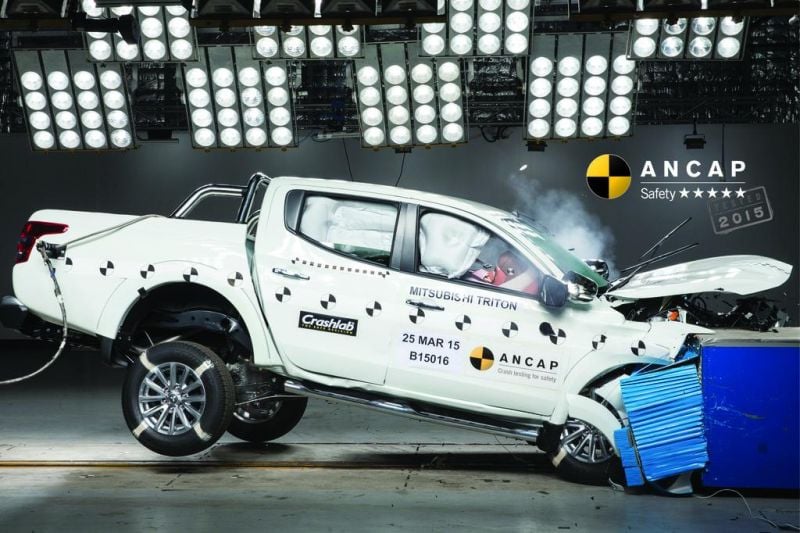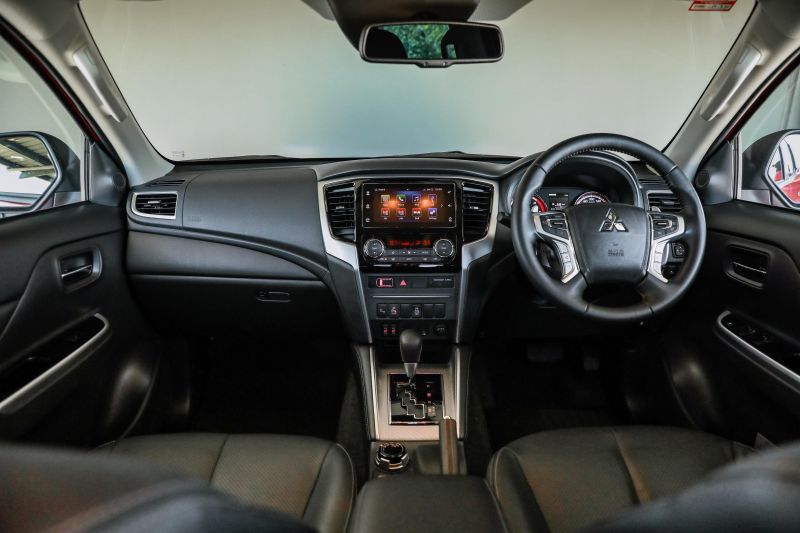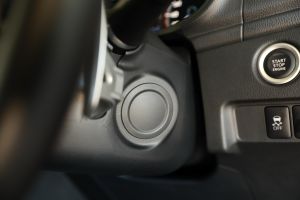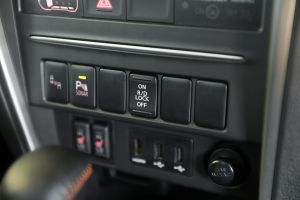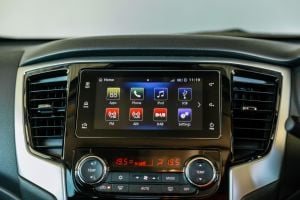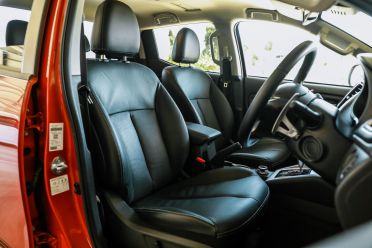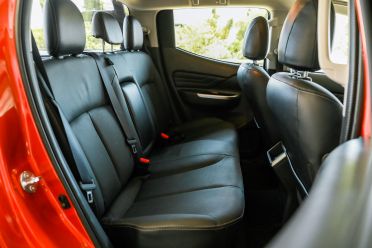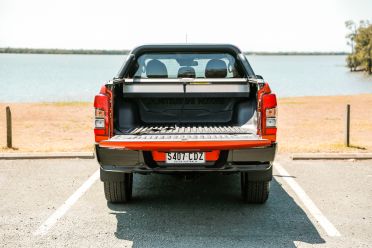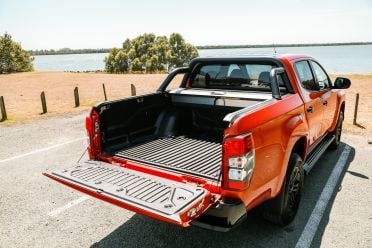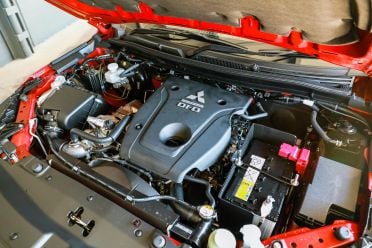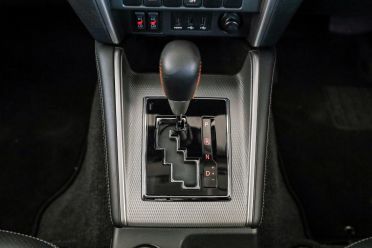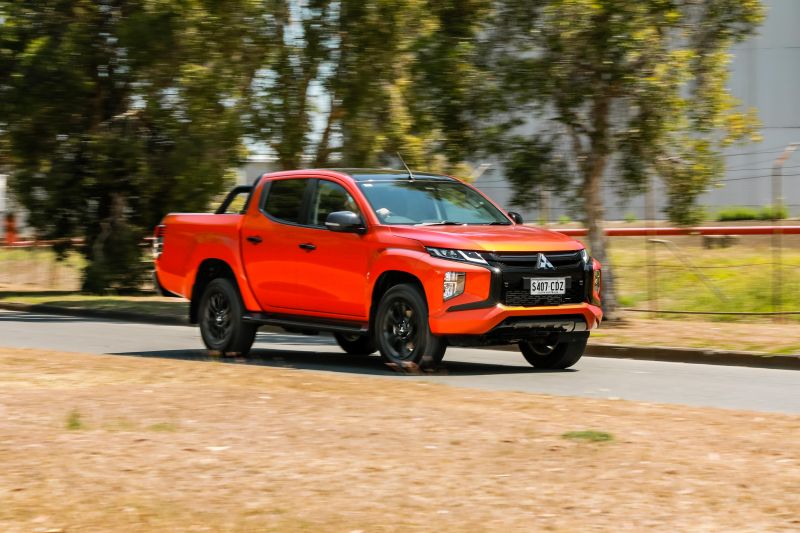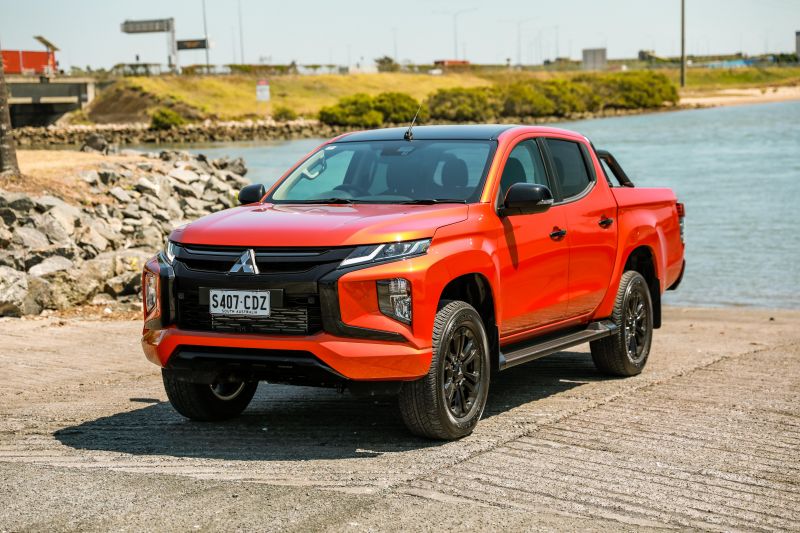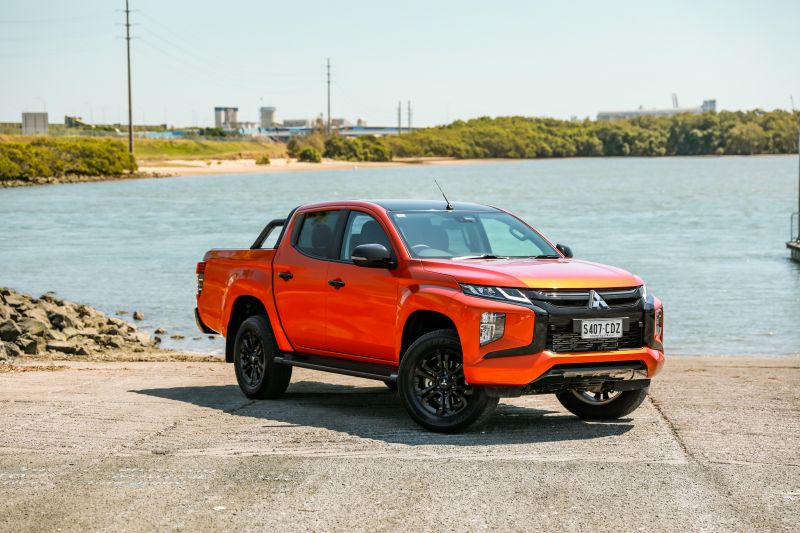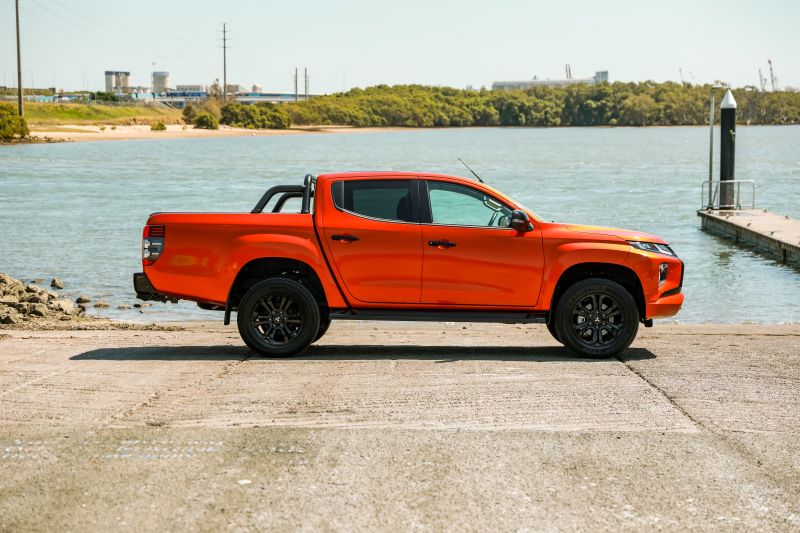Mitsubishi competes strongly on value, and there’s arguably no greater value vehicle in its line-up than the Triton.
While models like the ASX and Outlander tend to undercut similarly-specified rivals by a couple of thousand dollars, if that, the Triton significantly undercuts its rivals.
Take this flagship GSR, for example. While it mightn’t have all the active safety technology of the new Isuzu D-Max, it nevertheless has more tech than rivals like the Nissan Navara and Volkswagen Amarok.
In terms of features, it lines up with a D-Max X-Terrain, Ford Ranger XLT or Toyota HiLux SR5+. And yet, it costs anywhere between $7000 and $10,000 less than those rivals.
The HiLux and Ranger may be more powerful, but the Triton – Australia’s third best-selling ute – still offers a tantalising value proposition in the twilight of its life.
A new generation is expected to debut next year and will likely share more with the Navara from Alliance partner Nissan.

How much does the Mitsubishi Triton GSR cost?
The GSR is priced at $52,740 before on-road costs. The GLS Premium is gone for 2021, leaving the newly-introduced GSR as the flagship of the Triton line. You can, however, specify the optional Deluxe package on the GLS if you miss the GLS Premium.
Our tester was painted in Sunflare Orange, a no-cost option. Orange seems to be the hot ticket in dual-cab utes at the moment, with the recently departed Holden Colorado offering the bold Orange Crush and Isuzu prominently featuring its D-Max X-Terrain in Volcanic Amber, a shade even closer to that of the Triton.
If it’s all a bit much for you, Mitsubishi also offers Graphite Grey and Black Mica as no-cost options. White Diamond is $200.
The GSR is available with either a soft tonneau, hard tonneau or a roll-top cover, the latter two costing $2000 more.
How much should you pay?
At the end of the day, the price you pay at the dealership will be dependent on a number of factors such as when you want to buy (is the dealership chasing sales?), the stage of life of the model you’re purchasing (is a new generation being launched soon?) and of course your strength as a negotiator.
What do you get?
While the defunct GLS Premium made extensive use of chrome for its exterior, the GSR relies on gloss black exterior trim and includes matching black-finish 18-inch alloy wheels.
As a top-spec ute, the GSR has all the features you’d expect. That includes leather upholstery, heated front seats and a power adjustment for the driver’s pew.
These are in addition to features found elsewhere in the Triton range, including a 7.0-inch touchscreen infotainment system with Android Auto and Apple CarPlay (but no satellite navigation), as well as proximity entry with push-button start, power-folding exterior mirrors, front and rear parking sensors, dual-zone climate control and LED headlights.
There are also some features you won’t find on other rivals – there’s a surround-view camera, which you’ll only find on the SsangYong Musso Ultimate. Blind-spot monitoring and rear cross-traffic alert are also standard, which are only available on the D-Max, Mazda BT-50 and aforementioned Musso Ultimate.
Conspicuous by its absence is adaptive cruise control, which isn’t available anywhere on the Triton line but offered on several rival utes. Regular cruise control is standard, though.
If the orange exterior isn’t enough for you, Mitsubishi also offers a Tan Orange interior option. We’re not sure if they’re suggesting it melds two different shades together or if it’s supposed to look like Donald Trump’s face bronzer, but it adds “tan orange” leather upholstery and stitching.
Is the Mitsubishi Triton GSR safe?
When ANCAP tested the Triton in 2015, it received a rating of five stars.
That rating was based on a frontal offset score of 15.22 out of 16 and a side impact score of 16 out of 16. Whiplash and pedestrian protection were rated Good and Acceptable, respectively.
Standard safety equipment includes autonomous emergency braking with forward-collision warning, as well as lane-departure warning, blind-spot monitoring and rear cross-traffic alert. There are also front, side and curtain airbags, plus a driver’s knee airbag.
The forward-collision warning works at speeds of between 15 and 140km/h if it detects a vehicle and 7 and 65km/h if it detects a pedestrian. The autonomous emergency braking function will then work at speeds of between 5 and 80km/h for vehicles and 5 and 65km/h for pedestrians.
What is the Mitsubishi Triton GSR like on the inside?
Like many of its rivals, the Triton has a no-nonsense interior with a straightforward layout, hard-wearing plastics and good build quality overall.
There are some cheap elements, however. The doors, in Mitsubishi fashion, feel quite thin and have old-looking rubber buttons for the proximity entry.
Where the ignition barrel would be in lesser Tritons is covered with a piece of plastic that you can pull away slightly. And, despite this being the top-spec Triton, there are three button blanks located prominently on the centre stack.
The seatbelt display on the dash looks like it’s out of a TM Magna while the display in the instrument cluster, if not quite that vintage, is certainly well past its use-by date. There’s no digital speedometer and it has Mitsubishi’s cumbersome trip computer interface, which can only be controlled with one button.
While you won’t find any soft-touch plastics, the leatherette trim on the sides of the centre console is a nice touch, the steering wheel is handsome, and the paddle shifters feel like metal and are about the largest you’ll find this side of an Alfa Romeo Giulia.
The graphics may be looking old-hat but Mitsubishi’s infotainment system works well enough. I also didn’t experience any display issues like in the last Triton I reviewed.
The lack of satellite navigation, even on the top-spec GSR, is a disappointment, though. While Apple CarPlay or Android Auto typically provide a better navigation experience than most OEM systems, that’s contingent on you being somewhere with mobile phone service.
We’d also like to see some physical shortcut buttons for the infotainment system like you’ll find on the HiLux.
There are two USB outlets plus a much less common inclusion: an HDMI port.
The steering wheel tilts and telescopes, while the power driver’s seat adjusts for height. The front seats are quite comfortable and are well-bolstered, in stark contrast to seats elsewhere in the Mitsubishi range.
There’s a good amount of storage in the cabin. The padded front seatbacks have map pockets, each door has a bottle holder big enough for a 1L Voss bottle, and there’s a little recess at the base of the centre stack that’s big enough for a smartphone.
You won’t find air-conditioning vents at the rear of the centre console, instead they’re up on the roof and can be switched on or off. There are also flaps you can move to direct the flow of air.
Where you would ordinarily find air-conditioning vents, there’s instead a small, open cubby plus two more USB outlets.
Two back-seat passengers will find plenty of headroom and legroom though their friend in the slightly raised centre seat will find it a bit tighter than in a HiLux or Ranger, which measure 40mm and 52mm wider.
If you’re carrying young ones, you’ll find two ISOFIX and top-tether anchor points for child seats.
The Triton’s tray measures 1520mm long, 475mm deep, and 1470mm wide (1085mm at the wheel arches).
That’s around 50mm shorter than a HiLux or D-Max and 60-135mm narrower, though if you look just at the width between the wheel arches the difference shrinks to just 25-40mm.
Though the Triton’s tray is shorter than key rivals’, it has a longer rear overhang as its wheelbase is also shorter than rivals. At 3000mm, its wheelbase is 220mm shorter than that of a Ranger.
What’s under the bonnet?
While rivals like the HiLux and Ranger offer two or more different turbo-diesel engines, Mitsubishi offers just one across the range (a petrol four-cylinder is also available in the base GLX).
It’s a 2.4-litre four-cylinder turbo-diesel producing 133kW of power and 430Nm of torque, mated with either a six-speed manual or six-speed automatic transmission. Only the auto is available with the GSR.
Payload is 901kg, or 69kg and 102kg less than that of a D-Max X-Terrain or Ranger XLT.
Braked towing capacity also falls short of key rivals. At 3100kg, it hauls 400kg less than a HiLux, D-Max or Ranger.
How does the Mitsubishi Triton GSR drive?
The Triton is no rocketship, and sometimes you’ll find yourself with your right foot planted firmly to the ground as you merge onto a highway or take off from the lights. For the most part, though, the six-speed auto helps deliver power to the wheels effectively.
It isn’t the smoothest ute in the segment. If you ease off the throttle and then apply it again, you’ll feel a sharp jolt.
As has historically been common with ladder-frame, leaf-sprung utes, the Triton has a jiggly ride that pogos across even smooth asphalt. Hit a bump or rut and you feel some lateral movement in the Triton’s structure as the body absorbs the impact and settles.
With a carload of people or weight in the tray, the jiggling is noticeably reduced. You’ll still feel the ute shudder when you hit a bump, however.
None of this will be particularly egregious if you’re coming out of another dual-cab ute, but if you’re new to utes – for example, you’ve started using one as a family car – you’ll notice this doesn’t ride as well as the related Pajero Sport, let alone a passenger car or crossover.
The hydraulically-assisted steering is pleasingly well-weighted and helps you pilot this long pickup in urban confines, aided by a competitive 11.8-metre turning circle. It’s still a handful in a parking lot due to its length but you don’t have to battle with the steering to manoeuvre it into a tight space.
Kudos to Mitsubishi for offering a surround-view camera, a feature almost non-existent in this segment. Nevertheless, the image is quite grainy on both it and the reversing camera at night, not helped by the small size of the screen.
We’d also like for the surround-view camera to stay on for a little bit, even after you shift out of reverse, to help you adjust your park.
The Triton GSR, along with the cheaper GLS and the Volkswagen Amarok, is unique in the segment offering a full-time four-wheel drive mode. Rivals only offer low- and high-range 4WD modes for off-roading, and you could put serious wear on their drivetrains by driving on pavement in 4H mode.
The presence of a full-time mode inspires confidence. It helps reduce embarrassing tyre chirps if you’re a more, ahem, spirited driver, while it aids grip in rainy weather.
Far from being a purely tarmac-oriented all-wheel drive system, Mitsubishi’s Super Select II four-wheel drive system still features a locking rear differential and selectable low-range gearing if you want to venture into the rough stuff.
How much does the Mitsubishi Triton GSR cost to run?
Over a mix of city, suburban and highway driving, we averaged 10.1L/100km. Mitsubishi claims a combined cycle rating of 8.6L/100km.
Mitsubishi recently rolled out a 10-year, 200,000km warranty, though if you don’t service your Triton at a Mitsubishi dealer it’s reduced to five years and 100,000km.
Mitsubishi offers 10 years of capped-price servicing, with services costing $399 (year 1), $499 (years 2, 3, 5 and 7), $599 (year 9), $699 (years 4, 6 and 10) and $999 (year 8).
CarExpert’s Take on the Mitsubishi Triton GSR
If you want a dual-cab ute with plenty of luxury mod-cons, the Triton GSR is the best value ute this side of a SsangYong Musso.
While it has a good amount of safety kit for a ute, however, the Triton has been shaded by the new Isuzu D-Max with its raft of active safety technology.
The new top-spec D-Max X-Terrain is considerably more expensive than the Triton, however, to the tune of almost $10,000 before on-roads. Even the LS-U costs around $4000 more and misses out on some of the GSR’s convenience items, even if it does offer more safety kit.
That leaves the Triton occupying a unique space in the market. It undercuts other Thai-built utes by a considerable margin and yet, while it’s more expensive than the likes of the Musso and the LDV T60, it offers a wider dealership network, longer warranty and a stronger reputation.
The Triton might be down on power and refinement compared to the HiLux and Ranger but it’s still a decent steer for a dual-cab ute, while its full-time four-wheel drive mode is a rarity in this segment.
Throw in that long warranty and ten years of capped-price servicing and the Triton makes a very enticing value play.
Click the images for the full gallery
MORE: Mitsubishi Triton news and reviews
MORE: Mitsubishi news and reviews





